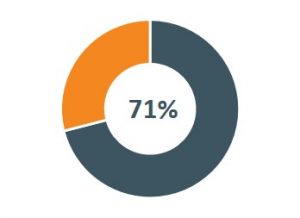As global eCommerce markets continue to grow, the geographic boundaries between manufacturers, sellers and marketplaces are breaking down rapidly, providing new participants with direct access to customers on a global basis. While a significant portion of products purchased in the U.S. has historically been produced in China and broader Asia, these manufacturers are increasingly finding ways to disintermediate middlemen distributors and market products to American consumers through Amazon and other eCommerce platforms by utilizing integrated fulfillment capabilities. In 2017, more than 250,000 new vendors from China became sellers on Amazon, and growth in international Amazon vendors is expected to rise as barriers to entry for foreign merchants continue to erode.
Historical Barriers to Entry Enabling the Rapid Increase of International Sellers
-
Scale and Proximity to Manage Inventory and Fulfillment
International vendors are leveraging Fulfillment by Amazon (FBA) to reach international customers in an efficient manner, with 71% of Chinese sellers using FBA, compared to a 47% average for sellers across Europe.
-
Cultural and Language Differences
While the ability to connect with consumers remains a strong advantage for local merchants, Chinese manufacturers are becoming increasingly skilled at tapping into the U.S. consumer mindset, with a growing ecosystem of training seminars and programs to support Chinese entrepreneurs seeking success in cross-border eCommerce.
-
Retail Intermediaries
While traditional retail models feature professional corporate buyers that curate a limited product and brand selection for each category, eCommerce platforms allow for thousands of products across a broad array of categories. Further, the competitive nature of open marketplaces and comparison shopping continues to benefit Chinese vendors with a competitive advantage on pricing and relative perception of providing quality products.
-
Brand Awareness
Historically, customers would have limited information while making purchasing decisions, relying on well-known brands and in-store marketing to signal quality and determine value. Across eCommerce, online peer reviews have become a key factor driving purchasing decisions, allowing foreign brands to develop strong customer followings and utilize basic Websites to provide an element of awareness and reassurance to potential consumers.
The rapid rise of eCommerce continues to benefit many marketplace participants, but Intrepid believes emerging brands will face new challenges and increased global competition that may temper organic growth without significant marketing and advertising support. Meanwhile, our team has developed a thesis around select tactics that can help domestic eCommerce vendors develop a protective moat around their offering.
Tactics to Enhance Success
-
Focus on Culturally Localized Products
A deep understanding of cultural nuances remains the most impactful competitive advantage of domestic merchants, allowing them to deliver products that appeal to consumers’ sense of fashion, identity and culture on a localized level remain one of the most important factors in driving purchasing decisions.
-
Develop Strong Brands
Consumers continue to rely on trusted brands, especially for higher priced purchases. By establishing a reputation for quality through high-quality content and reinforceable messaging tactics, branded product sellers should be able to defend their market from new entrants.
-
Licensed IP or Branded Content
The ability to license trade names or other IP provides a powerful tool for businesses without widely recognized brands, allowing them to gain recognition and relevance with large or niche consumer bases.
-
Brand Protection, Design, and Gating
A strict focus on unique designs and brand gating are strong mitigants in preventing potential suppliers from going direct or attempting to circumvent sellers.
Sources: MarketPulse, The Wall Street Journal.


